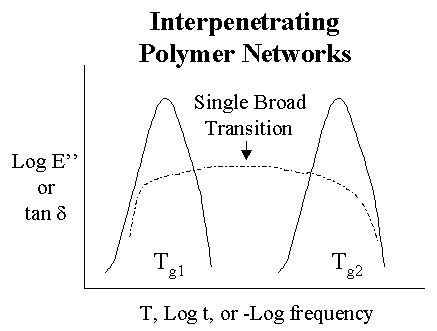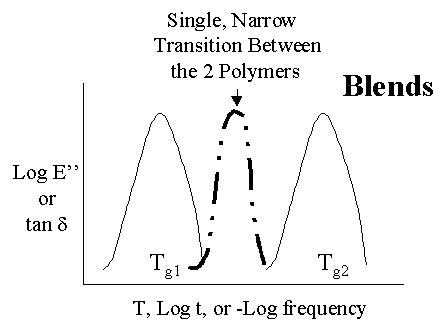

Interpenetrating Polymer Networks (IPN's) are composite materials in a special way. A very general, simplistic definition of an IPN is a material with two co-continuous phases or a material with 2 parts intertwined throughout. For a detailed website describing IPN's, please visit DM's IPN's. The main goal of an IPN is to trap 2 polymer phases in each other thus causing a possible synergistic behavior or an addition of properties as opposed to a compromise of properties is the scenario which typically results in most composites.
It is understood
by many that a polymer can absorb or dissipate energy best when it is in
its glass transition state
(Tg). Many polymer composites and blends are combinations of 2 polymeric
materials which in conjunction with each other, alter the Tg, but do not
broaden the temperature range. If two materials can be blended together
in a manner in which their properties are maintained and the glass transition
temperatures of the 2 combine to broaden the temperature range in order
to absorb energy at many applicable thermal stages, then you got something.
Depicted below are two Dynamic Mechanical spectra (DMA) which show the
Tg's of blends and IPN's. As you can see, the IPN displays a much
broader glass transition than the blends.
 |
 |
The following analysis
techniques are very instrumental in characterizing IPN's, both their mechanical
properties and their morphology.
|
|
|
|
|
Please evaluate yourself and take this AWESOME IPN quiz.